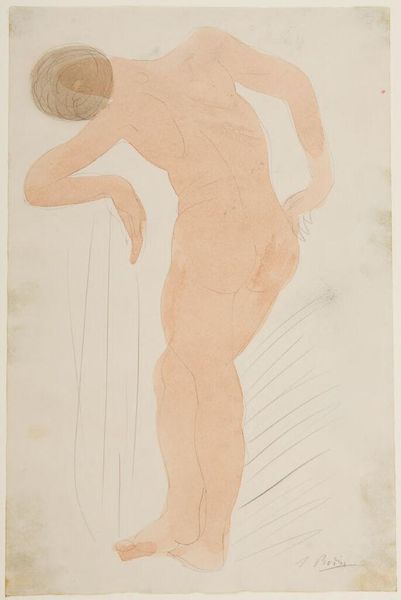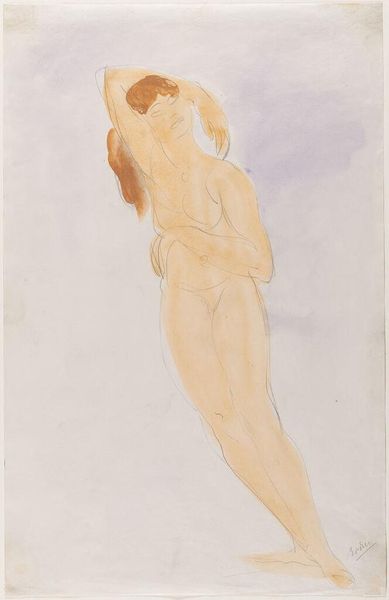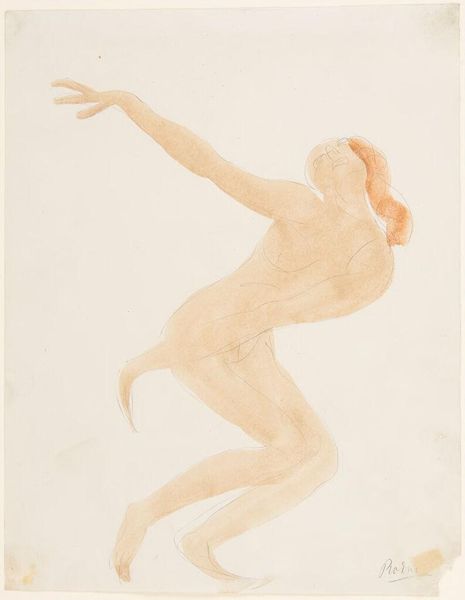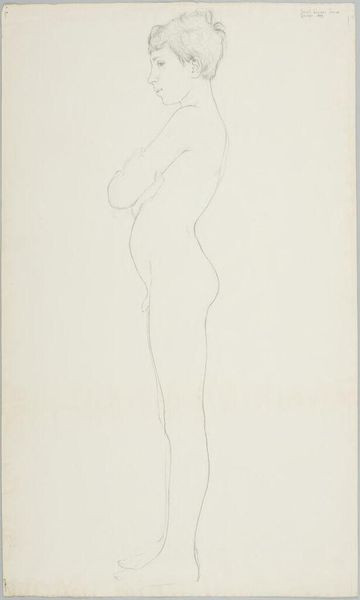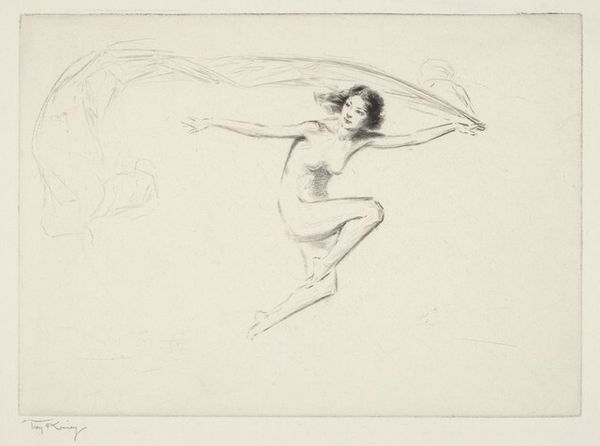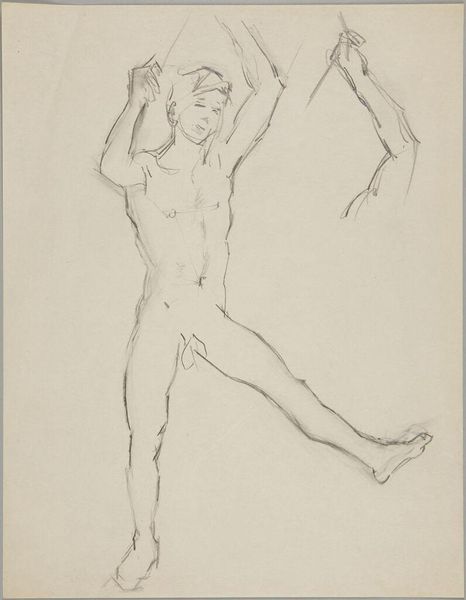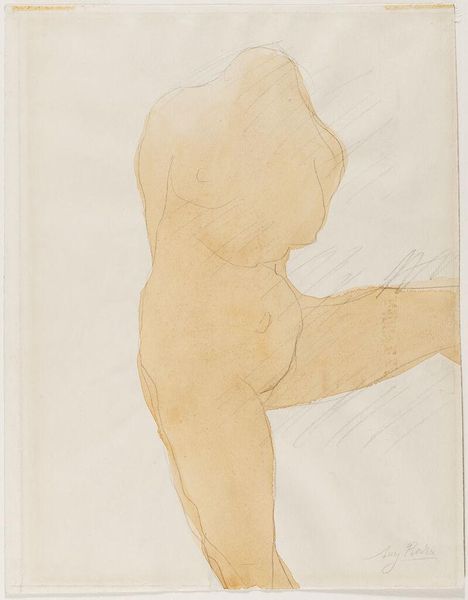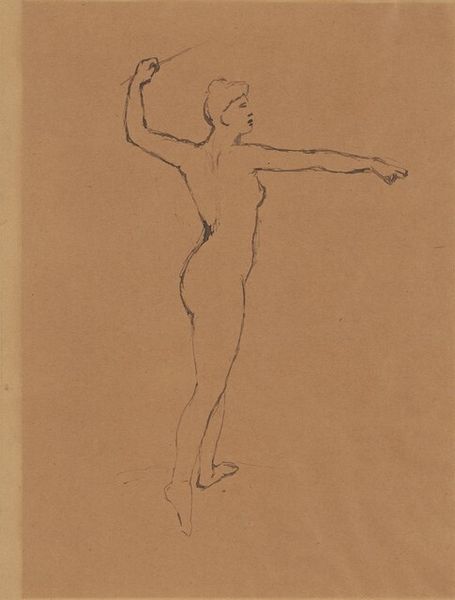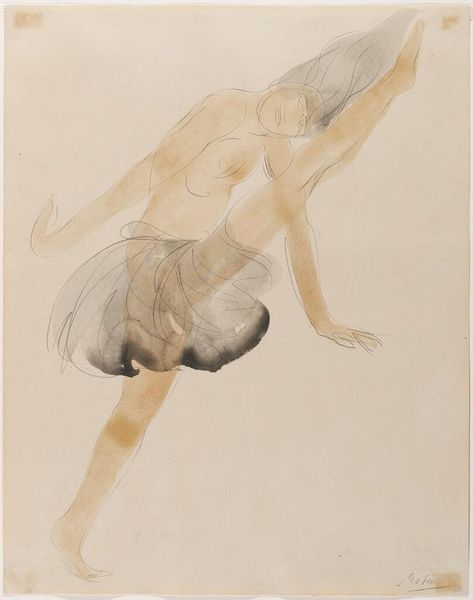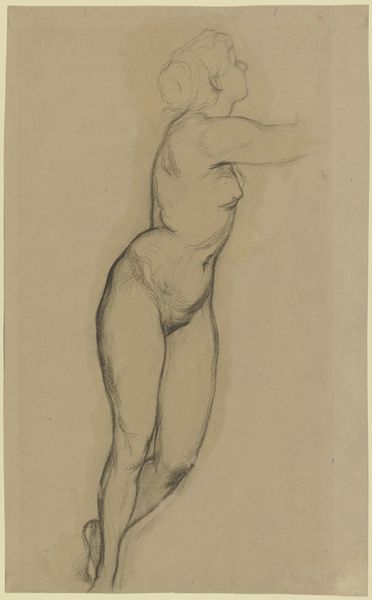
Dimensions: 35.6 x 25.7 cm (14 x 10 1/8 in.)
Copyright: CC0 1.0
Curator: This sketch is "Dancing Figure," attributed to an imitator of Auguste Rodin, part of the Harvard Art Museums collection. The artwork, rendered in pencil and watercolor, captures a dancer in a moment of dynamic movement. Editor: It feels incredibly fragile, doesn't it? Almost as though the figure could dissolve back into the paper at any moment. I'm really drawn to the raw, almost unfinished quality. Curator: Considering Rodin's influence, this sketch opens dialogue around how female bodies were objectified in art. Was dance seen as a form of liberation or exploitation, considering the societal pressures on women performers? Editor: I see it more as a study in form, a focus on musculature and torsion that aligns with Rodin's exploration of the body. The use of watercolor makes me think about the accessibility of materials for artists at the time. Was this a preliminary study or something intended for a wider audience? Curator: Ultimately, this work invites us to reflect on the legacy of artistic imitation and the complexities of representing the human form through both gendered and class-conscious lenses. Editor: Indeed, and the careful consideration of materials really emphasizes the artist's deep understanding of form and movement.
Comments
No comments
Be the first to comment and join the conversation on the ultimate creative platform.

